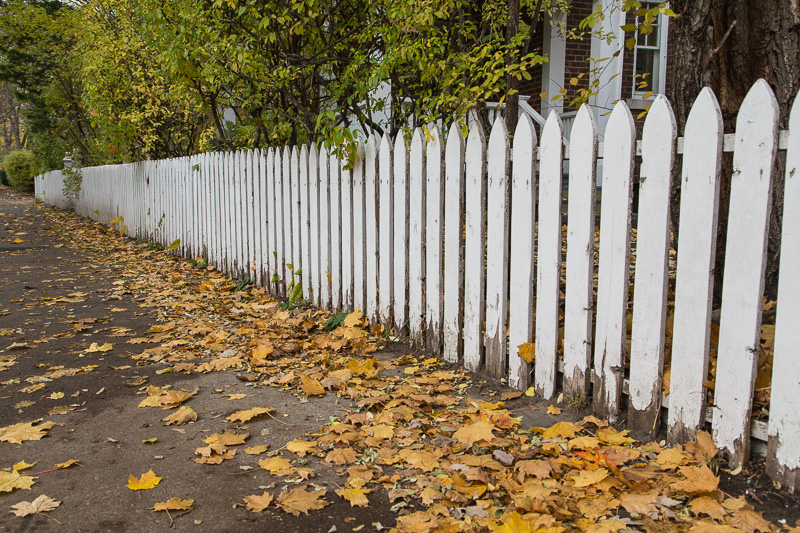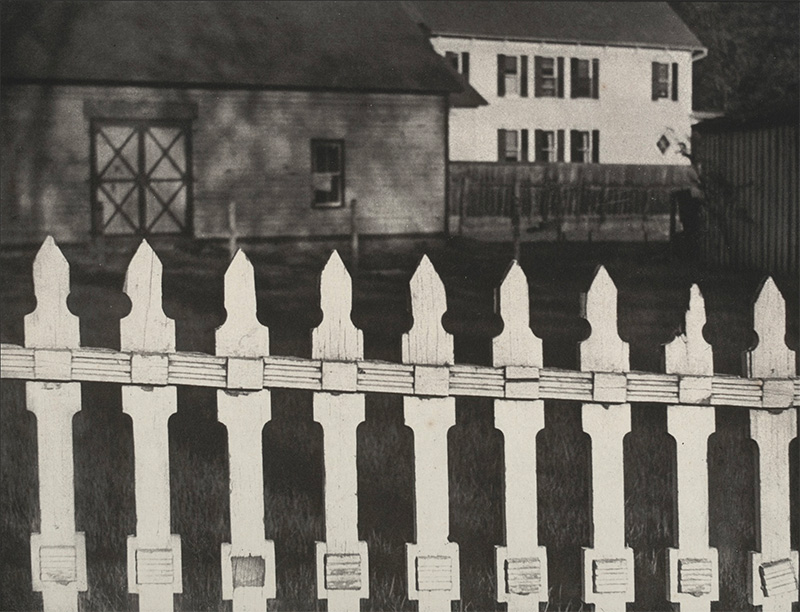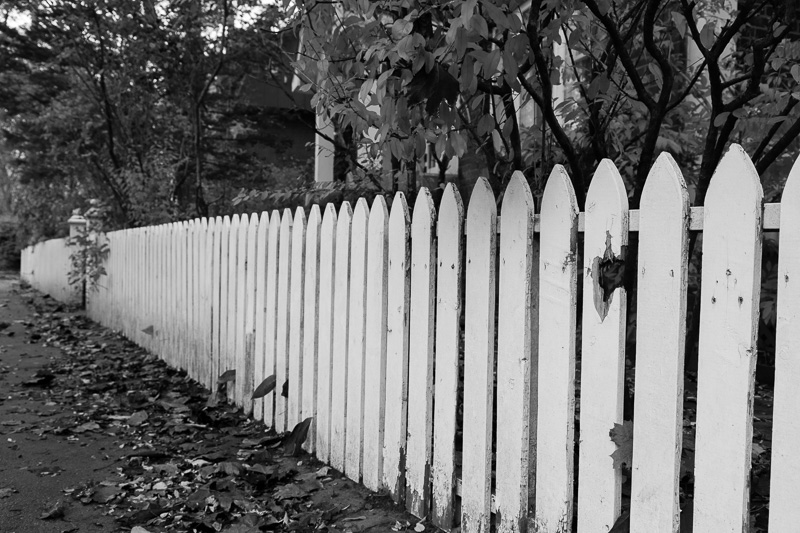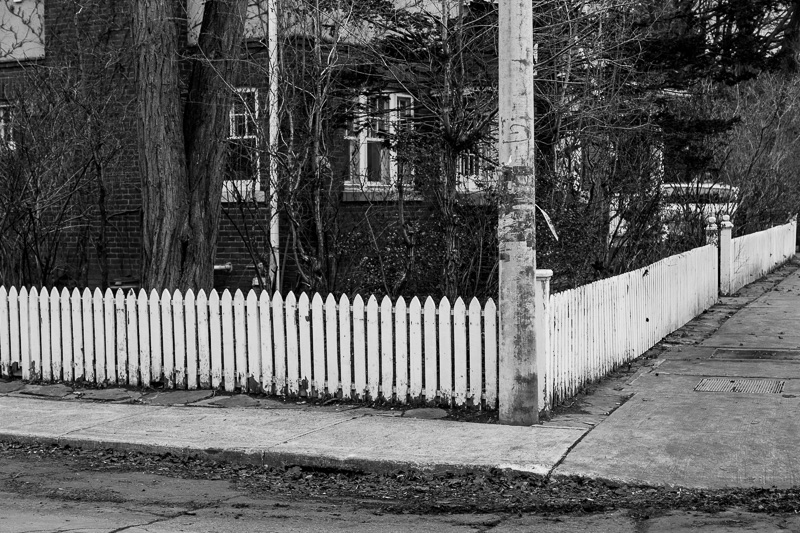Some days, I pass a white picket fence. Although I’m sure there are many white picket fences in the GTA, it’s the only one I’m aware of in downtown Toronto. In general, the white picket fence has come to symbolize a related array of meanings:
• domestic bliss
• a settled life
• North American middle class
• financial stability
Some days, as I pass this particular white picket fence, I take a photograph of it:

In his book, The Ongoing Moment, Geoff Dyer writes at length about the white picket fence as a photographic subject. He begins with a well-known photograph which Paul Strand shot in or about 1917.

As with most photographs, this one is difficult to appreciate without a sense of its context. Strand shot it at a time when photography was still struggling to achieve legitimacy as an artistic medium. Influenced by modernist trends, like Cubism, Strand had been experimenting with treatments that produced abstractions. One can see how a white picket fence would be appealing with its repetition and its play between positive and negative space. But Strand walked away from pure abstraction. Dyer describes it like this:
Having mastered this kind of abstraction he wanted to use the compositional skills he had acquired to return to the human world – to reintegrate his picture with the world from which he had painstakingly abstracted them. In doing so he would harness the excitement of experimentation with the homely truth he had glimpsed in the course of a trip through Texas in 1915. Fascinated by the way the monotony of the landscape was ‘broken by shacks and little houses’, Strand noticed that things ‘become interesting as soon as the human element enters in’.
Strand’s photo isn’t just a pattern of light and dark lines. There are buildings in the background. The fence has a function: it sets a boundary. Those who cross the boundary commit trespass. The boundary excludes us from the buildings in the background. As viewers, we cannot enter into that imaginative space without committing a kind of trespass.
Perhaps as a tribute to Strand, Michael Ormerod also photographed a white picket fence. It isn’t in the public domain, so I don’t post it here, but you can view it on the Crane Kalman Brighton web site. Some of the slats are broken. The symbolism has been undermined. The broken slats hint at a narrative to which the viewer isn’t privy. Nevertheless, because the fence no longer serves as a clearly defined boundary, we are free to ‘trespass’ – we can enter into that imaginative space and speculate as to what might have happened.

Returning to ‘my’ fence, I note that it, too, is damaged. While the damage disrupts the orderliness of the pattern, it isn’t nearly as dramatic as Ormerod’s fence. Besides, why would I want to imitate Ormerod any more than Ormerod would want to imitate Strand? Wouldn’t it be more fruitful to move the conversation forward? What should come next? One might ask what a postmodern white picket fence looks like. If you search “white picket fence” on Google Images, most of the results it returns are images of purely abstracted fences. It looks like a return to modernist abstractions of a century ago. But there’s a twist. I call it the Corbis effect. These images have been abstracted, not to fulfill a modernist aesthetic, but to fulfill a simple commercial requirement. They are fence widgets to be dropped into an ad. Maybe that’s the answer to my question: a postmodern white picket fence is a commodity; it has a watermark on it.
Meanwhile, I go on photographing ‘my’ white picket fence, trying to discern what to say next in my own conversation with Paul Strand and Michael Ormerod.
